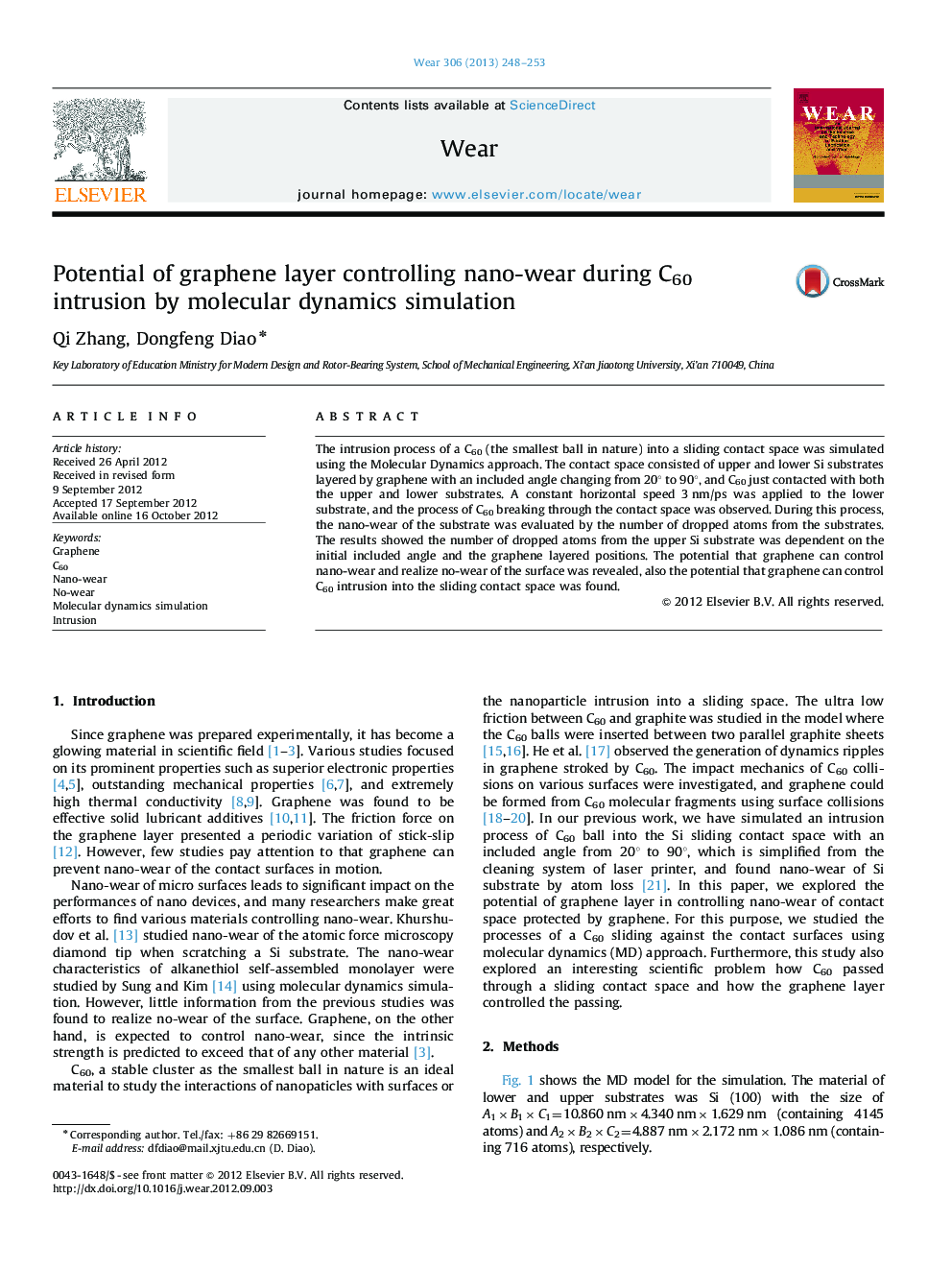| Article ID | Journal | Published Year | Pages | File Type |
|---|---|---|---|---|
| 617623 | Wear | 2013 | 6 Pages |
The intrusion process of a C60 (the smallest ball in nature) into a sliding contact space was simulated using the Molecular Dynamics approach. The contact space consisted of upper and lower Si substrates layered by graphene with an included angle changing from 20° to 90°, and C60 just contacted with both the upper and lower substrates. A constant horizontal speed 3 nm/ps was applied to the lower substrate, and the process of C60 breaking through the contact space was observed. During this process, the nano-wear of the substrate was evaluated by the number of dropped atoms from the substrates. The results showed the number of dropped atoms from the upper Si substrate was dependent on the initial included angle and the graphene layered positions. The potential that graphene can control nano-wear and realize no-wear of the surface was revealed, also the potential that graphene can control C60 intrusion into the sliding contact space was found.
► We simulate C60 intrusion process into graphene layered sliding contact space. ► The nano-wear of the substrate was evaluated by the number of the dropped atoms. ► The number of dropped atoms was effected by initial included angle. ► Graphene can control nano-wear and realize no-wear of the surface. ► Graphene can control C60 intrusion into the sliding contact space.
